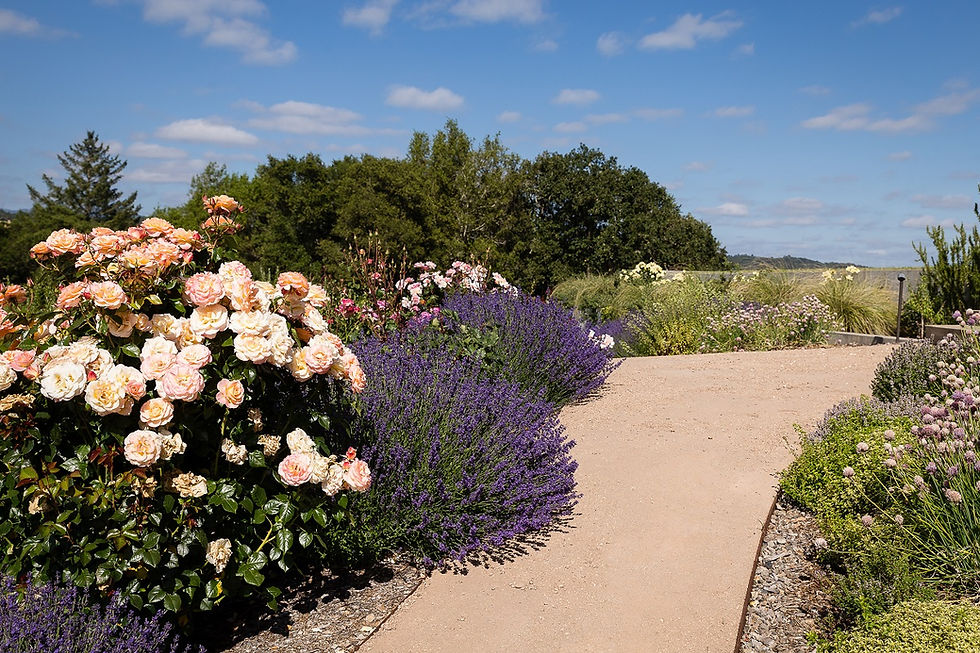Landscape Construction Tips for Spring
- Briana Johnson
- Apr 13, 2021
- 3 min read
Updated: Mar 23, 2024
As your garden and landscape wakes up from its slumber, it needs your help to shine again. Follow these tips from Gardenworks to help your yard make its debut this year.

Know What and Where to Plant
Before planting any plants or shrubs:
1. Make sure they are appropriate for this time of the year. Cold sensitive plants installed too early will be delayed or may be killed by temperatures below 32 degrees.
2. Look for hardy, native and other climate appropriate plants that need less maintenance and water.
3. Steer clear of invasive, alien species. California has a list of invasive plants.
When in doubt, consult with a landscape contractor.
Talk to your contractor about what plants will do better in spring. Think about how much shade and sun the plants will get in different parts of your yard. Stick to these rules for proper plant placement:
➢ Do not install plants too close together or they will compete for nutrients and may need more trimming. Crowded plants can also spread pests more easily.
➢ Before planting plants, read their tags for light, water and exposure requirements
➢ Do not plant shrubs or plants too close to a building – always allow room for their mature size.
➢ Choose plants that bloom at different times throughout spring for a longer display and hence greater curb appeal.
➢ Do not mix plants with different water and light needs
Feed and Protect Your Grass
Your grass needs help to bounce back from dormancy. Treat it with a combination of fertilizer and pre-emergent. Fertilizers provide grass with essential nutrients such as nitrogen, phosphorus and potassium (N-P-K), whereas pre-emergent herbicides prevent many weed seeds from germinating.
Pre-emergent will keep crabgrass (a troublesome plant that competes with grass and can even poison plants) in check. If you fail to prevent crabgrass, you may spend your entire summer fighting it.
Always follow label directions when applying any chemical product on your plants.
Prune Your Trees
There are many benefits to pruning your trees. Pruning removes dead and dying branches to make room for new growth and deters pests. Remember, poor pruning can cause damage. Do not remove more than 25% of foliage. Resist pruning a newly planted tree for the first three to five years unless it is specifically to remove broken or dead branches. This time will allow the tree to develop its scaffold or main branching structure.
Protect Your Yard from Spring Pests
Many bugs go into a dormant state in winter to survive cold temperatures. As temperatures rise, they become active. Here are some tips to help you keep spring pests out of your garden. ➢ Clean your yard. Clear away fallen branches and dead plants. Rake up fallen leaves ➢ Mow your lawn at regular intervals ➢ Do not let standing water accumulate in your yard ➢ Pests love moisture. To control moisture, keep your gutters clean and maintain your plumbing ➢ Routinely inspect your plants for signs of and populations of pests. Begin treatment as population thresholds become noticeable. Begin by treating with mild product and increase potency if populations are not controlled. Always follow label directions when applying any chemical product on your plants. Want to give your backyard a makeover? Let a reputable landscape contractor in Sonoma County help. We are committed to helping our customers keep their yards beautiful year-round. To make an appointment, call us at (707) 857-2050.






